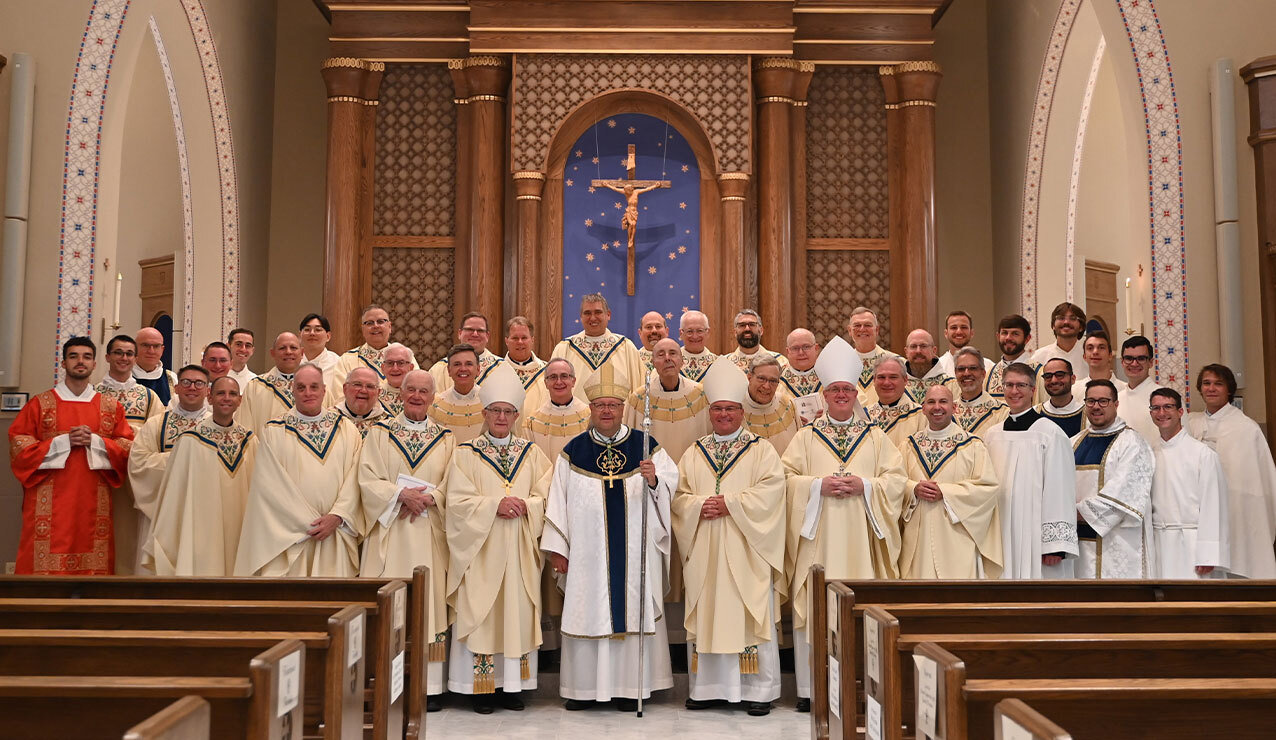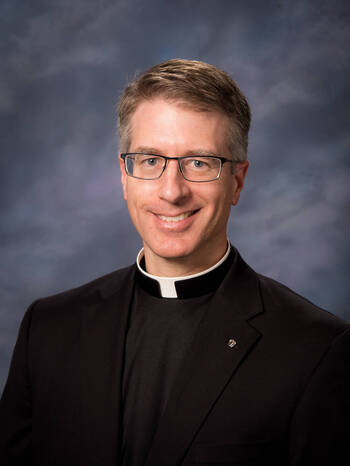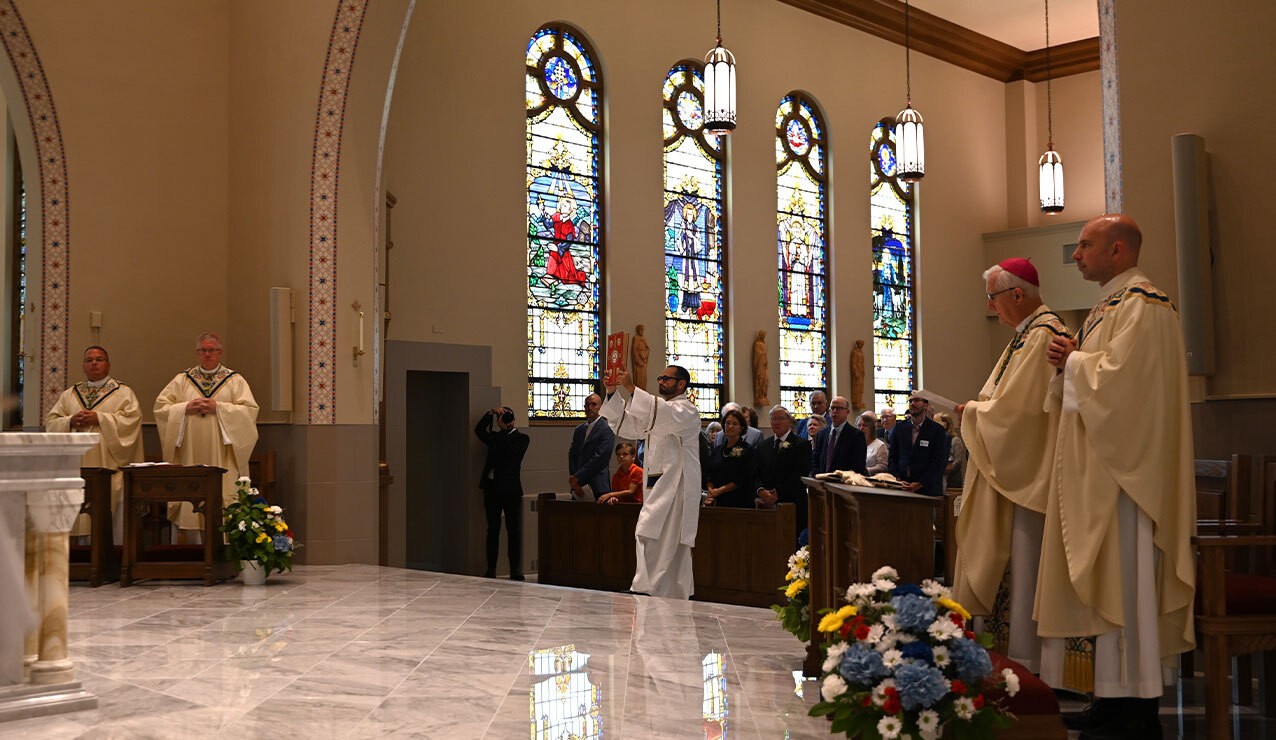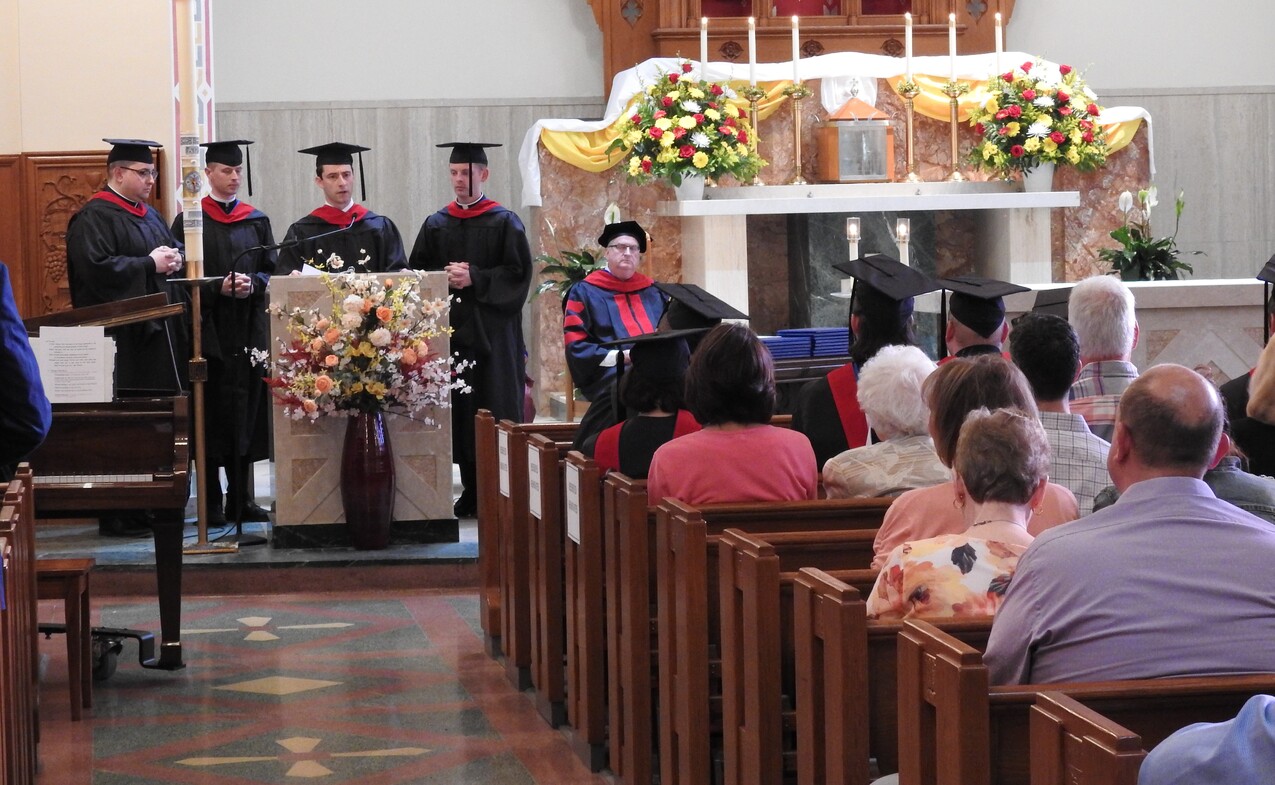MSP User Spotlight: Saint Mary Seminary & Graduate School of Theology


Fr. Christopher J. Trenta serves as Assistant Professor of Liturgical-Sacramental Theology at Saint Mary Seminary and Graduate School of Theology in Wickliffe, Ohio. Ordained in 2009 for the Diocese of Cleveland, he joined the seminary faculty in 2019 after completing advanced liturgical studies at the Pontifical Liturgical Institute in Rome. Fr. Chris recently met with the MSP team to share how he uses the system to schedule a busy calendar of liturgies at the seminary.
— Fr. Chris Trenta, Faculty Member, Saint Mary Seminary
Tell us about Saint Mary Seminary.
Saint Mary Seminary and Graduate School of Theology was founded in 1848 and serves the Diocese of Cleveland by preparing candidates for the Catholic priesthood and offering advanced theological education. We have 65 seminarians, 13 resident priests, and students at both the college seminary and graduate school levels.
What does your liturgy schedule look like?
We typically have three or four liturgies a day, between the seminary and a nearby diocesan shrine. That includes Morning Prayer, Daily Mass, Evening Prayer, and Night Prayer — plus Sunday Masses and occasional special liturgies.
In the summer, our schedule is a bit more low-key, but across the semester, we're scheduling more than 1,200 assignments for seminarians and priests.
Which roles do you assign in MSP?
Just about everything!
- Presider
- Celebrant
- Homilist
- Master of Ceremonies
- Acolytes
- Servers
- Readers
- Sacristans
We recently started using Folders in MSP to separate assignments between our college and graduate programs. We also track each seminarian's year of study using custom fields to ensure they're placed in ministries appropriate to their formation level. That level of customization is essential in a seminary setting.
In addition to our regular liturgy schedule, we also use MSP to organize one-time services, like diocesan funerals or anniversary Masses. Seminarians can then sign up online in a role we call Special Liturgy Servers. These are excellent opportunities to gain experience in unique liturgical settings.

Which MSP features are most helpful in your seminary setting?
The mobile app is a huge benefit. Our seminarians love it — they check it daily, sometimes on the way to chapel. If someone's running late, they can quickly see who's scheduled and fill in as needed.
Sub requests work really well, too. It's much more efficient than group emails. Seminarians sub for each other responsibly, and that builds a sense of accountability.
I like using MSP's built-in emailer to send Announcements. This is great for targeting messages to specific ministry groups, classes, or cohorts with updates relevant to them.
And I appreciate the color-coding on our ministry calendar to easily track which roles are covered and where we still need a sub. Seeing everything updated in real-time online or on the phone is very helpful.
How has MSP changed your scheduling process?
Before MSP, it was a manual system. We relied on spreadsheets, emails, and a lot of back-and-forth. Now, I can build out the full semester more quickly. When orientation starts, the schedule is visible to everyone and the seminarians know exactly where they're supposed to be. That clarity allows them to take ownership. They step up, fill in, and support each other.
Even with the complexity of our setup, MSP lets me create a structure that works well for our seminary's scheduling needs.
What would you share with other seminaries considering MSP?
I've seen how long it takes to manage scheduling by hand. MSP makes a big difference. Once the schedule is live and subs are enabled, it really runs itself. It's an excellent way to communicate clearly with everyone, especially through the app. Each seminary can take different approaches, but MSP helps you build a clear system that supports formation and keeps everyone on the same page.
Any final scheduling advice?
I've been using MSP from the start and I keep discovering new ways to adapt it for seminary use. The support team has always been responsive to feedback and questions. I'd encourage others to give MSP a look. It's very capable of serving the needs of a seminary.

Want to see if MSP is right for you?
If you're tasked with organizing ministry schedules — in a seminary or a parish — you're not alone. Ministry Scheduler Pro can help you save time, streamline communication, and simplify scheduling.
Get started with a 30-day free trial and see what's possible.
